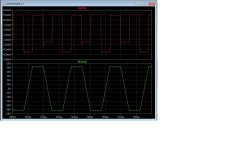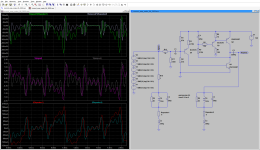Is your disagreement based on measurement or audio reviewers opinion? Just stick the scope (or souncard through attenuator) to amps speaker terminals while playing reasonably loud.I disagree.
Ever heared about Loudness War? Contemporary recordings are less dynamic than ever.It is true that average playback levels are lower than many people think, but today recordings have good dynamic range and you frequently find crest factors of 20dBs, so you may be listening at 1W but unclipped peaks will ask for 100W!
I have measured clipping at the output of amplifiers (both full range and bi-amp systems), you will be surprised of the results.
Regarding your second question, yes I am aware of them, but I am not talking of heavily compressed files, of course.
You can design a sound system that never clips. but it is not the most common situation (you will have limited spl or high cost, etc.), or you can design a system for a "controlled" clipping that is acceptable to your ears.
Regarding your second question, yes I am aware of them, but I am not talking of heavily compressed files, of course.
You can design a sound system that never clips. but it is not the most common situation (you will have limited spl or high cost, etc.), or you can design a system for a "controlled" clipping that is acceptable to your ears.
Furthermore, watching the spectrum of the clipped output is a very instructive exercise , that will expose the differences between topologies, etc.
I have measured clipping at the output of amplifiers (both full range and bi-amp systems), you will be surprised of the results.
I'd already got surprized when scoped the output while playing loud my 89dB speakers. Never exceeded 10Vp-p.
In order to be noticable and annoying, clipping events should be relatively frequent, like every 5-10sec in average with duration more than 10-20ms. Otherwise, if it occurs once in 15min it would be porceived as small defect in recording and would be forgiven.
But of course, variations in senitivity, room size and listening habits may require higher power sometimes.
One more cure for clippingophobia. There is a certain volume knob possition at which 0dBFS recorded test sine begins clipping. It can be easily found by calculation and some measurement. Below this point clipping is impossible. Mark this point and see how often you go above it.
Thats very sound approach.
I too have watched digital oscilloscope many times, with memory for highest signal, rarely exceeding few watts peak crest. Never seen clipping. At main system, at normal listening level, with quite efficient speakers, biamplified, with ~2x20 watts classA for mid-tweeters, and 2x120 watts classAB for four 15" woofers.
Now, garage system used for grill parties, thats totally different situation. Clipping increasingly with increasing liquer consumption.
https://www.diyaudio.com/community/...ion-network-cc-rf2-and-cf.217790/post-4958347
I too have watched digital oscilloscope many times, with memory for highest signal, rarely exceeding few watts peak crest. Never seen clipping. At main system, at normal listening level, with quite efficient speakers, biamplified, with ~2x20 watts classA for mid-tweeters, and 2x120 watts classAB for four 15" woofers.
Now, garage system used for grill parties, thats totally different situation. Clipping increasingly with increasing liquer consumption.
https://www.diyaudio.com/community/...ion-network-cc-rf2-and-cf.217790/post-4958347
Last edited:
Yes , yes ... Hawksford VAS topologies. actually sounds good clipped , won't fry yer' tweeters.Furthermore, watching the spectrum of the clipped output is a very instructive exercise , that will expose the differences between topologies, etc.
Just hard 2'nd order , like a tube amp ! VAS Runs cooler , too (clamps - no diodes).
Even the "wonderful Wolverine" will cook a tweeter if "partied too hard"... 😉
OS
Attachments
Just add the 2200uF cap at lt1010 output and simulate again ...Actually, this situation is understandable if you remember the relationship between voltage and current of inductance.
http://hyperphysics.phy-astr.gsu.edu/hbase/electric/indtra.html
At first quickly, but then more and more slowly, the current approaches its nominal value. If the voltage has changed before the current reaches its nominal value, it is then too late to reach that value. A new goal is set... which again is not achieved because the voltage changes again in the meantime etc. This is where the half-finished current flow comes from. This applies to all voltage amplifiers, regardless of whether they are called HiFi or High End.
By the way, you can still catch Make Magazin 4/2023 (until September 28, 2023). Take a photo of the circuit on page 91 and recreate it. The sound won't disappoint you 😉
My initial quote was because the waveforms of post #117 2nd picture have looked too identically. Attached a simulation reduced to the max.
I've added also the power results of the voltage amplifier which shows also interesting data. The simulation starts at time 0 to see the initial transient response too
Have fun, Toni
I've added also the power results of the voltage amplifier which shows also interesting data. The simulation starts at time 0 to see the initial transient response too
Have fun, Toni
Attachments
My initial quote was because the waveforms of post #117 2nd picture have looked too identically.
This is the phenomenon that blew me away right from the start when I tried out the circuit for the first time: at low powers the amplifier just sounds too perfect. You don't want to turn up the volume (good for the neighbors 😴).
Attached a simulation reduced to the max.
👍
I've added also the power results
It appears that the current amplifier heats up the speaker less.
Well, I can take that statement back. You have adjusted the output amplitudes of the voltage with the voltage divider R11/(R11+R12). Therefore, the absolute values of the power are no longer directly comparable.
I thought about how the adjustment of the simulated measurements should be done. So I introduced the "Rreference" resistor. The current through this resistor is supposed to indicate the target current. I also adjusted the amplifier for a 6 ohm load, new values: R3 = 1.585k, R4 = 345k.


- Home
- Amplifiers
- Solid State
- Sound of the bipolar transistors

